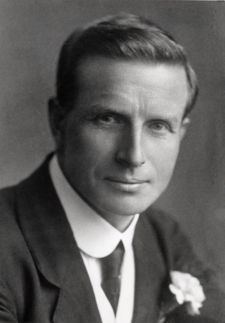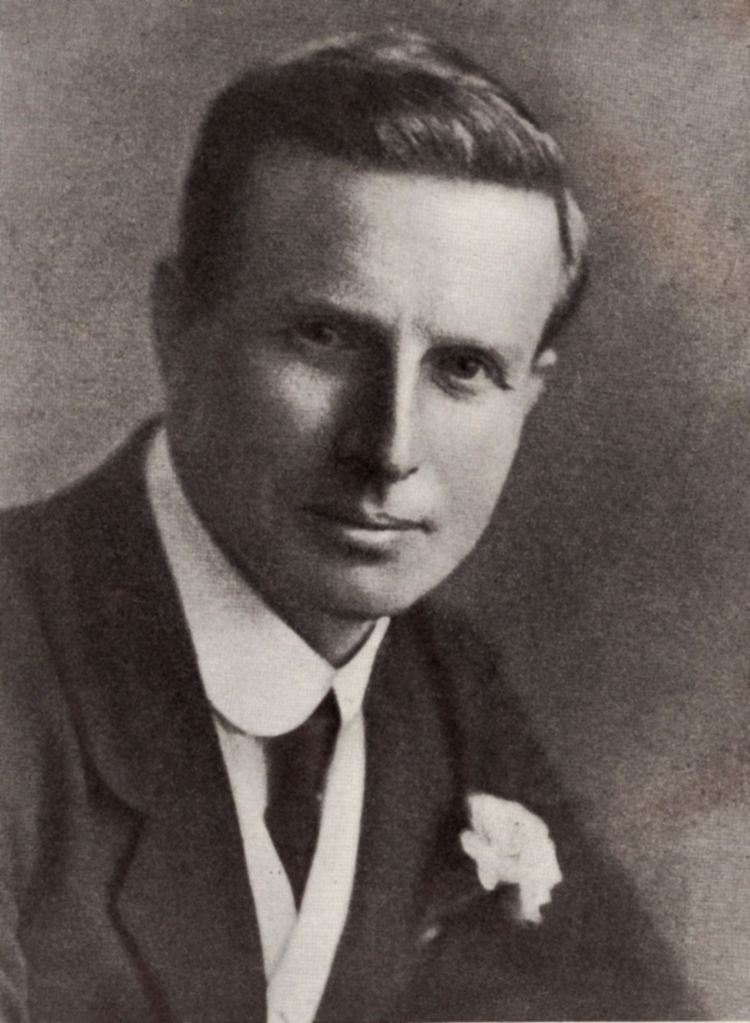Name John Esslemont Role Author | ||
 | ||
Books Baha'u'llah and the New Era, Bah©L'u'll©Lh and the New Era | ||
Dr john esslemont
John Ebenezer Esslemont M.B., Ch.B. (1874 – 1925), was a prominent British Bahá'í from Scotland. He was the author of the well-known introductory book on the Bahá'í Faith, Bahá'u'lláh and the New Era, which is still in circulation. He was named posthumously by Shoghi Effendi as the first Hand of the Cause he appointed, and as one of the Disciples of `Abdu'l-Bahá. He was also an accomplished medical Doctor and linguist becoming proficient in western and eastern languages.
Contents

JOHN ESSLEMONT
Background
John Esslemont was born in Aberdeen on 19 May 1874, the third son and fourth child of John E. Esslemont (1859-1927), a successful merchant, and Margaret Esslemont (née Davidson). He came from an eminent family and was educated at Ferryhill School, Robert Gordon's College, and the University of Aberdeen. Esslemont is related to 19th Century Liberal Member of Parliament Peter Esslemont - John's great-grandfather is Peter's grandfather. He graduated in medicine in 1898 with honorable distinction. Unfortunately, Esslemont had contracted tuberculosis during his college days and this caused him to give up his promising career in medical research. He traveled internationally and married Jean Fraser to whom he was drawn by their mutual interest in music. On return to Britain Esslemont took the position of medical superintendent of Home Sanitorium for tuberculosis in Bournemouth. Esslemont became the first Bahá'í of Bournemouth in the earliest days of the Bahá'í Faith in Scotland in 1915 after hearing of the religion in December 1914 from a co-worker's wife who had met `Abdu'l-Bahá in 1911 and had some pamphlets to share. In about 1918 `Abdu'l-Bahá, then head of the religion, wrote a tablet in his honor and also mentioned interest in a book he was working on. After receiving an early draft of this book `Abdu'l-Bahá invited Esslemont to Palestine which he accomplished in the winter of 1919-20, after the Battle of Megiddo (1918) settled the land. Ultimately `Abdu'l-Bahá was able to personally review several chapters. News of Esslemont's declaration of faith, and his forthcoming book, played a role in establishing the beginning of the Australian Bahá'í community and elsewhere. Esslemont was elected chairman of the Bahá´í Local Spiritual Assembly of Bournemouth when it was elected in a few years and later as vice-chairman of the National Spiritual Assembly of the United Kingdom until he left the country in 1924 following the closing of the sanitorium where he had been employed. He then traveled to Palestine to assist in translation work.
Esslemont, besides speaking English well, was proficient in French, German, and Spanish, and was an Esperantist and later learned Persian and Arabic well enough to assist in translation. Following the death of `Abdu'l-Bahá, Shoghi Effendi vacationed in Esslemont's familiar area of Bournemouth. Subsequent to this, Esslemont took permanent residence in Palestine to assist Shoghi Effendi, who then also helped further refine Esslemont's book.
Esslemont died in 1925 from his tuberculosis and is buried in the Bahá'í Cemetery in Haifa along with several other well-known Bahá'ís. Shoghi Effendi posthumously designated Esslemont as the first of the Hands of the Cause he appointed in 1951, as well as one of the Disciples of `Abdu'l-Bahá. In 1955, Esslemont was described by Shoghi Effendi as one of the "three luminaries of the Irish, English and Scottish Bahá'í communities."
There is a Bahá'í school named after Esslemont, The John Esslemont School, in the Grampian region of North East Scotland operating since 1987. There is also a John Esslemont Memorial Lecture held annually in November in Aberdeen, where speakers from medical backgrounds present research to peers. In Austria a publishing house was founded in 2010 in memory of his lifework, the Esslemont Verlag, publishing Bahá'í gift books.
Bahá'u'lláh and the New Era
In 1916 Esslemont began work on a book which became Bahá'u'lláh and the New Era, perhaps the foremost introductory volume on the Bahá'í Faith which eventually was published in 1923 and since translated into dozens of languages. Early editions contained several passages that could not be authenticated, or were incorrect. These have been reviewed and updated in subsequent editions. This practice has been criticized by observers, but is considered an integral part of maintaining the integrity of the texts. Among the numerous alterations in later revisions is the removal of any reference to the early Bahá'í historian Avarih, who `Abdu'l-Bahá had named "Chief of Missionaries" prior to his conversion to Islam.
Esslemont also performed the first review of the worldwide progress of the Bahá'í religion in 1919. While unpublished it was identified and reviewed by recent scholars noting it was intended to be a chapter in the book. In 1920 a review of Prayer in the Bahá'í Faith, especially the Long Obligatory Prayer as then translated, was published by Esslemont. Later an expanded version would be a chapter of Bahá'u'lláh and the New Era.
More than sixty years later in the 1980s it remained in the top ten of cited Bahá'í books and of the ten most numerous books on Bahá’í topics found in libraries in 2008 around the world the second highest is Baha'u'llah and the New Era.
